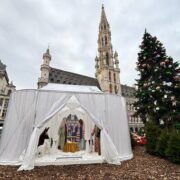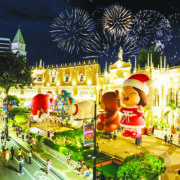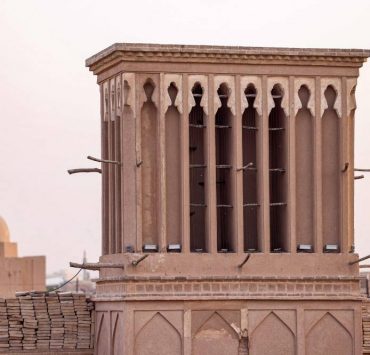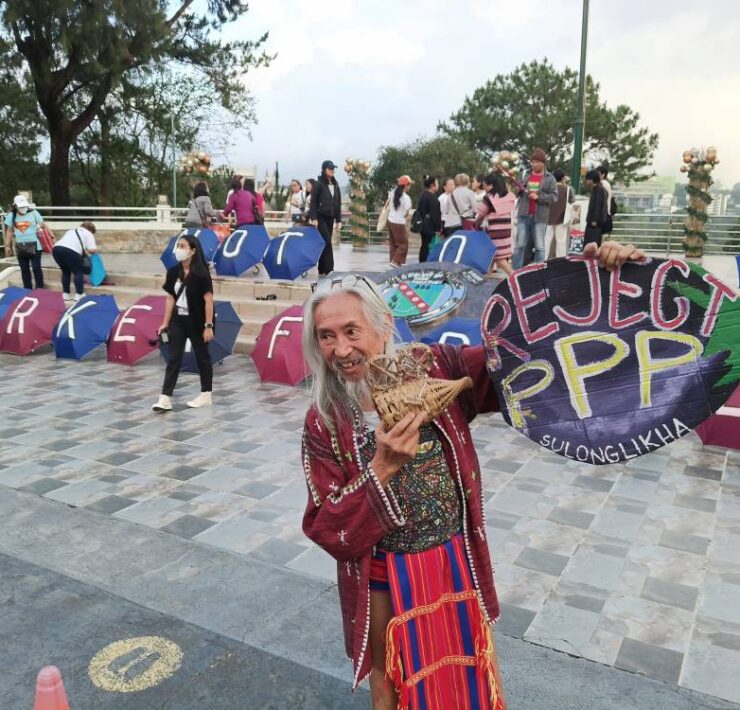‘Elemento’: Makati’s not-so-secret garden of art
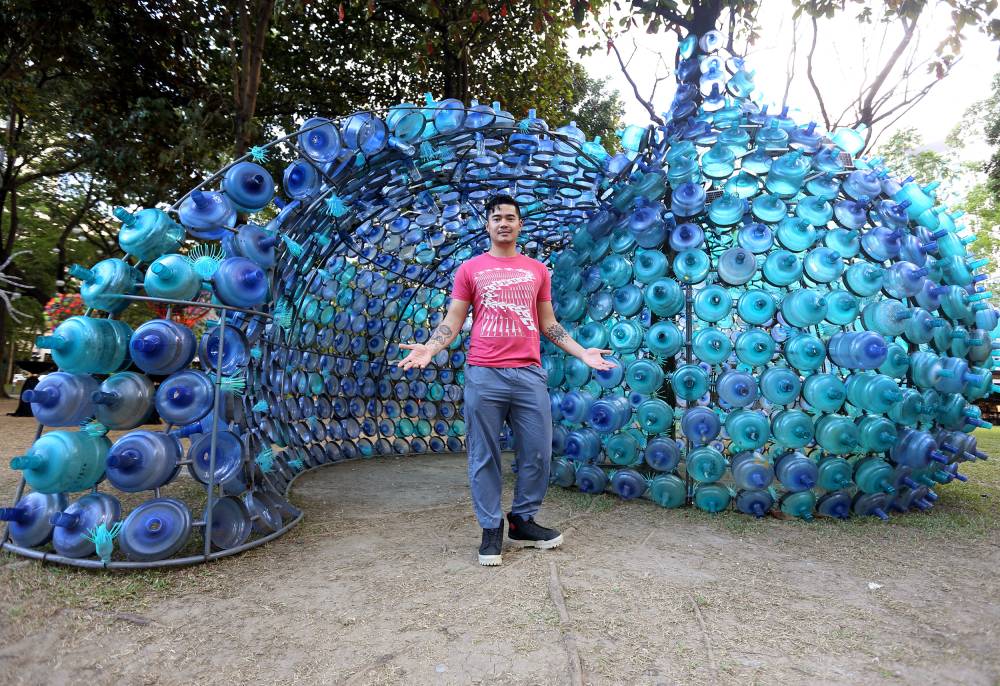
Bordered by the concrete, metal and glass of the everyday everything on Paseo de Roxas, Makati Avenue and Ayala Avenue, the Ayala Triangle Gardens are, in Ayni Nuyda’s words, “the only living entity left in the heart of Makati, where else could you find that?”
Here blooms greenery. And here blooms art—and the unexpected—for everyone.
These December evenings, people gather to take in the traditional light-and-sound show called the “Festival of Lights.”
But just a few meters away, amid the trees and the grass, is “Elemento: Art + Light + Flow,” the multimedia exhibition from Search Mindscape Foundation, Art House and Ayala Land that discusses environmental awareness and culture in the 10 years since Supertyphoon “Yolanda” (international name: Haiyan).The first spectacle you will see is the massive igloo-like structure wrapped around a tree made entirely of the top halves of one-gallon drinking water containers. Once you enter it, you will find that it spirals around until you get to the tree. There are solar-powered lights, as well. This is the “Nautilus of Dreams,” and it is the first part of the outdoor installation by artist Leeroy New.
Public art
“Nautilus” is a collaboration between New and Liter of Light, the nonprofit founded by Illac Diaz that turns discarded water bottles into lamps.
“Using the Liter of Light solar lamps made sense, because I guess essentially, we were doing kind of similar things making use of what is available and showing models for how to transform them and kind of make them practical,” New tells Lifestyle. “Recently I’ve been looking toward using them as semi-architectural materials and sculptural materials. And repurposing them as design objects.”
Walk away from “Nautilus” and you will find plastic trees sprouting from the ground with orbs on top; these also light up with solar lamps. This is “Elemental,” the second part of New’s outdoor installation. “The Elemental Pods, as we like to call them, are all similar in form. We did this to kind of highlight the open space, make the most of it, encourage people to look up rather than just walking through the park.”
The outdoor installations are all about public art, the aspect of the “Elemento” exhibition that Nuyda is most excited about. Nuyda, the daughter of the late contemporary master Justin Nuyda, is the force behind coorganizer Search Mindscape, a nonprofit organization that fosters the Philippine art community by giving opportunities to not only artists, “but also for viewers to have a different experience in art.”
The other organizer is Art House, headed by Carlo Pineda, which, he explains, is “an online platform for artists. We really created it to be more inclusive so that the artists would have access to market. Right now, we also want to become more intensive in terms of the creators, because we really geared our platform to be more on the creation side as against the audience.”
Search MindScape and Art House first worked together in April on a sustainability project titled “Agos.” Continued conversations between the two groups discussed something bigger: Ergo, “Elemento,” the biggest show either group has put up.
The serious planning began in August. The biggest challenge has been the logistics, but that is Nuyda’s strong suit. “My favorite really is pulling everything together, from installation, to exhibit to gallery to coordinating with all these 36 amazing artists, you know, learning every process because I curated the show, as well. I know the story behind all the artworks and the [performance]. It’s something that multidisciplinary, and I think that’s what’s fulfilling.”
This represents a big step forward for Art House as well, as Pineda says the online platform is venturing into merchandise for the first time to gain a younger audience. “Elemento” fits because “we build space for conversation, immersion and collaboration, so I think that’s what’s most important.”
From a sheer installation standpoint when it came to New and the outdoor installations, the main obstacle was time. “We did our best to make everything happen in more or less a month, New says. “It was all kind of fast-tracked. With large scale public art, there’s always something that you have not anticipated that can and may go wrong. Problem solving is a big part of this kind of work.” For example, they could only work at night, so it took the better part of a month to put “Nautitlus” and “Elemental” up.
Revolving gallery
New’s installations are only the outdoor part of “Elemento.” Several stories are up at the Shops at the Ayala Triangle, which is the revolving art gallery. Here, Nuyda gathers the work of five Filipino contemporary masters: Nuyda and National Artists for Visual Arts Carlos “Botong” Francisco, Abdulmari Imao, Jose Joya and Vicente Manansala.
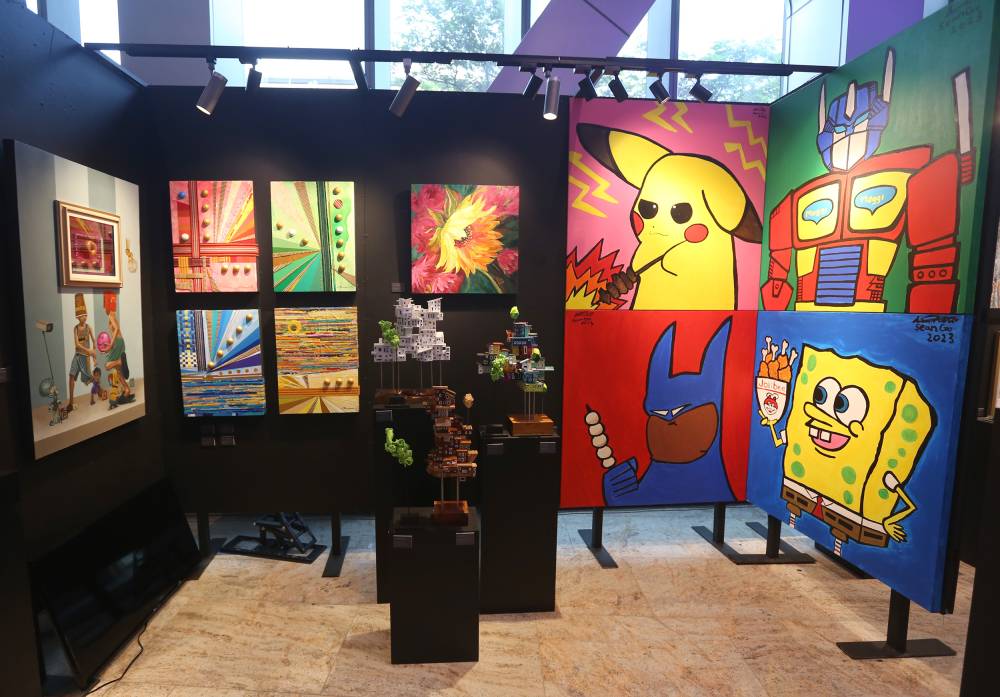
But “Elemento” also features 36 contemporary artists including New: 0270501, Grace Agbayani, Anton Aguas, Andron Anchinges, Jopet Arias, Lalay Atilano, Charming Baldemor, Maks Bodegon, Marpolo Cabrera, Enon de Belen, Meyo de Jesus, Anita del Rosario, Megs Empinado, Rodin Fernandez, Sean Go, Joseph Ingking, Niccolo Jose, Kurinai Lopera, Nasser Lubay, Ronna Manansala, Jao Mapa, Aaron Virata Mempin, Pepe Mendoza, Dennis Morante, Jaime Nepomuceno, Abe Orobia, Ayen Quias, Rebie Ramoso, Alfonso Recto, Anina Rubia, Joemarie Sanclaria, Jeffrey Sisican and Melissa Yeung-Yap.
The works are mounted on PolyAl panels, which are made from recycled Tetra Paks. Similarly, the upstairs exhibition actually started on Nov. 17 (the Artist’s Prologue, a kind of “soft launch,” according to Nuyda), but then an entirely new set of works by the same artists were mounted for the official vernissage on Dec. 2; another set will soon be mounted before the indoor exhibit ends (hence the “revolving” part).
It’s key that these artists are all together. “I think it’s about time,” Nuyda says. “Why not? But I think it’s good to put all of this in one room. I want to break barriers. There shouldn’t be a fine line between a master and an emerging artist. It’s all about the content, the narrative the curation behind it, because each individual is always unique.”
Contemporary lens
Nuyda points out that the works emphasize how the classic works with the new, such as the masters. “All of this art were designs of what they did before, but executed with technology. So that’s the difference, what’s interesting.” The Botongs, for example, have been digitized; others use augmented reality.
For Pineda, Art House is “not just an exhibitor, but we build space for conversation, immersion, collaboration and Filipino culture. We celebrate it through a contemporary lens. We bring back the joys of biking around, kicking around sepak (bamboo balls) and all these local cultures that are being forgotten.” Pineda also emphasizes the sustainability element of “Elemento,” and how it is being held 10 years after “Yolanda.”
During the vernissage, the “art” and the “light” parts of the exhibit subtitle were evident. The “flow” part came when the members of the Daloy Dance Company came out in costumes designed and fabricated by New from recycled material. They slowly danced among the “Elemental” installations and among the guests to the ethereal sound of “Praying Aliens” by Shylo Love Om until they made their way to the steps on the side of the building, climbing until they stood on the different levels.
The exhibit upstairs was officially opened with a ribbon cutting and appreciate speeches by Makati City Vice Mayor Monique Lagdameo and the President’s deputy Social Secretary Dina Arroyo Tantoco.
New’s outdoor installations are the most obvious sign of the public art push—but there are others. There are banig (woven mats) on the grounds with baskets of sepak balls for picnics and play. Every carless Sunday, Bambino bikes will be available for children to use.
While the exhibit upstairs will run until Dec. 23, the outdoor installations will be available to experience until Jan. 14, 2024.
“And the goal of art is not even mainly to for people to collect them, but just experience them,” New says. “They don’t even have to intentionally go to art-sanctioned spaces, but they can experience art by accident in their daily routine. And this is what we hope this project can start and encourage.”








